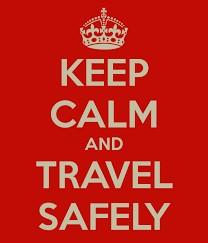
Walking to school
Walking is a great way to get to school – it’s healthy, free and doesn’t create pollution. It also reduces traffic congestion during the ‘school run’.
Walking to school also gives older children independence. Once they know their route and can cross roads safely, they can walk by themselves or with friends.
But younger children need to be accompanied by an adult, especially if there are busy roads. If you can’t walk your child to school they might be able to join a ‘walking bus’. This is when a group of children walk to school with at least two adults. Even if you can walk your child to school, a walking bus enables you to share the responsibility with other parents and frees up a bit of extra time.
If you would like to see a walking bus in your area, talk to other parents and staff at your children’s school to see if you could set one up together.
Cycling to school
Cycling is another great way to get to school. However, young people aged between 11 and 15 are more likely to be killed or injured on the roads than any other group, so they need to be aware of the dangers.
If your child cycles to school, make sure their bike is in good working order, and that they wear a helmet and reflective jacket. Work out the best route, with the least traffic.
Find out about cycle training, which should be provided free by your local authority. Ask your child’s school for details.
Driving to school
If walking or cycling aren’t possible, there are several ways of getting to school by road:
- public transport
- school buses
- car-sharing
- family car
Driving your child to school with empty seats in your car is the least environmentally-friendly way to get them to school. However, it’s still the way many kids get to school, especially while they’re at primary. If this is your situation, it’s worth taking some time to see if you could organise it any other way, at least on some days.
Your child may be eligible for free school transport. Your child will qualify automatically if they are aged between five and 16 and attend the nearest suitable school, and the school is further away than the ‘statutory walking distance’ (two miles away for children aged seven and under; three miles away for those aged eight and over).
Help may still be available for children who don’t qualify automatically, for example, if they are from low-income families or if they have special educational needs or disabilities. To find out more, it’s best to check with your local authority. The website www.direct.gov.uk is also very informative.
Travel tips for secondary pupils
- Practise your child’s journey with them before they start secondary school.
- Choose busy times, not in the middle of the day.
- Make sure your child is aware of potential danger points – looking carefully before crossing busy roads, taking extra care at bus stops and getting on and off trains.
- Make sure your child keeps their possessions safe, eg mobile phones, keys and money.
- Talk with your child about what they would do if something unexpected happened, eg if there was a security alert on their train and passengers were asked to leave the train.
- Talk with your child about what they should do if they felt threatened, eg if they felt an adult was following them or behaving oddly on public transport.
